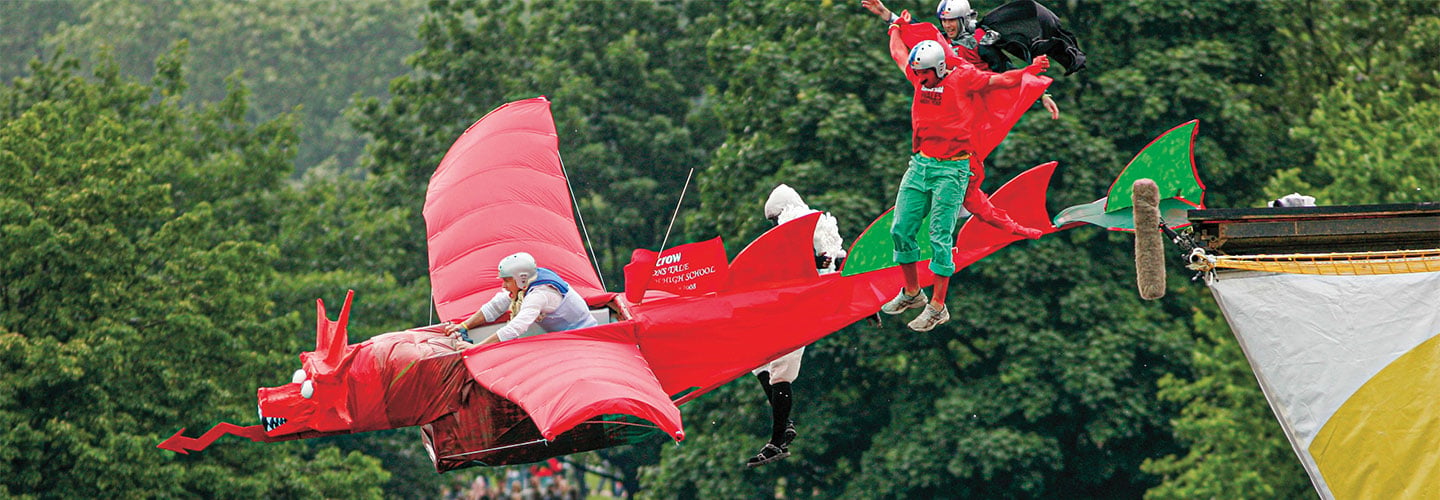Have you ever seen a flying sausage?
What about a soaring banjo or a giant airborne roll of toilet paper? These wacky machines were all entries in past Red Bull Flugtag challenges. Red Bull’s Austrian founder created the event, which means “flying day” in German. The annual contest has teams build homemade, human-powered aircraft. Contestants then push their creations off an 8.5 meter (28 foot)-tall platform over a body of water. The goal is to see which will stay aloft the longest.
The lighthearted Flugtag competition takes place in different cities around the world. Most entries are more goofy than airworthy. They usually roll off the platform and nose-dive straight into the water. There’s a reason real-world aircraft aren’t shaped like flying ears of corn or pigs with wings: These shapes aren’t designed with aerodynamics in mind, meaning the properties that affect how air interacts with an object. It’s what allows a vehicle to launch into the sky—and stay there (see Physics of Flight).
But not all Flugtag entries are flops. Some contestants take the comical contest seriously. With physics on their side, these teams engineer creative contraptions that can really fly.
Did you ever see a flying sausage? What about a soaring banjo? Or a giant roll of toilet paper in the air? These wacky machines were all entries in past Red Bull Flugtag challenges. Red Bull’s Austrian founder created the event. Flugtag means “flying day” in German. Teams build homemade, human-powered aircraft for the yearly contest. Then they push their creations off an 8.5 meter (28 foot)-tall platform over a body of water. The goal is to stay in the air the longest.
Flugtag takes place in different cities around the world. It’s a lighthearted competition. Most entries are more goofy than airworthy. They usually roll off the platform and nose-dive straight into the water. Real-world aircraft aren’t shaped like flying ears of corn or pigs with wings. There’s a reason for that. These shapes aren’t designed with aerodynamics in mind. That means the properties that affect how air moves around an object. These properties allow a vehicle to launch into the sky—and stay there (see Physics of Flight).
But not all Flugtag entries are flops. Some teams take the funny contest seriously. With physics on their side, they make creative contraptions that can really fly.

